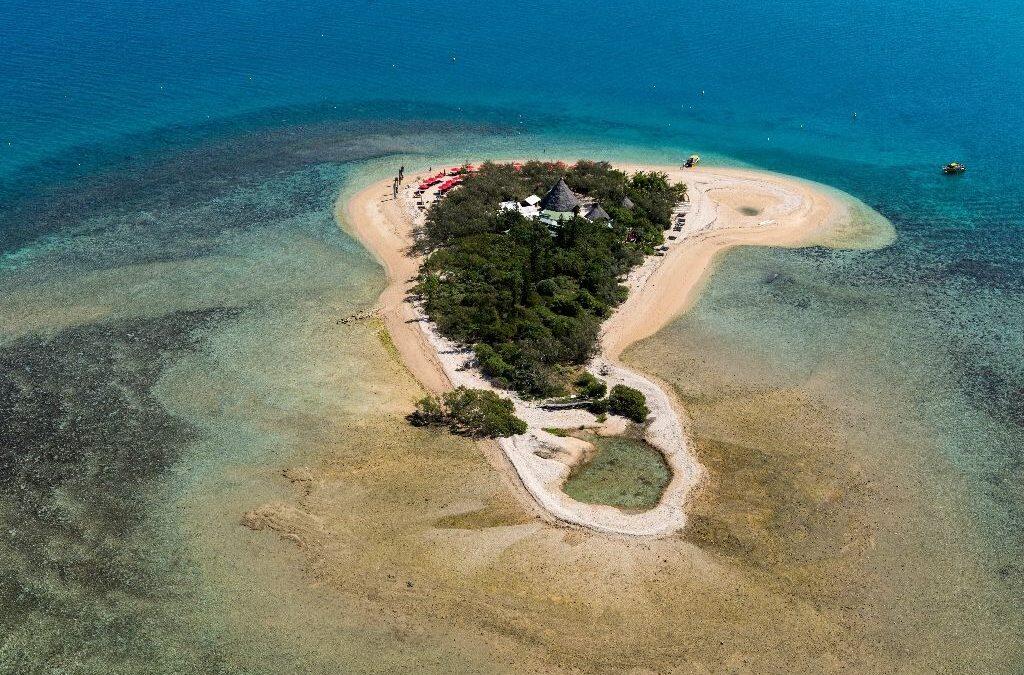Marine biologists are crossing their fingers after New Caledonia’s coral reef, a UN-inscribed natural wonder of the world, was hit by bleaching this year.
Bleaching — when corals turn pale after tropical seas dramatically warm — has been the prelude to a catastrophic die-out in many parts of the world.
That was the fear in many minds when New Caledonia’s reef was slammed in February by a warming episode that was as brutal as it was unexpected.
Results from the first surveys since show the worst-case scenario has been avoided, but the area remains vulnerable.
“The temperature reached as high as 32 degrees (Celsius, 89.6 degrees Fahrenheit) two or three metres (yards) from the shore for a long period,” said Fanny Houlbrecque, with France’s Institution for Development Research (IRD).
“All it takes is for water to be just one degree (1.8 F) above normal for coral to bleach.”
The warming was a jolt for many experts.
It coincided with the El Nino weather pattern, in which waters in the western Pacific — where the French territory is located — should typically be a bit colder than normal.
The corals in New Caledonia form a double barrier reef, the second largest in the world, that extends around the territory’s largest island and several smaller ones over a mighty 1,500 kilometres (900 miles) — greater than the length of Britain.
One of the few reefs in the world to be considered in relatively good health, the system is a magnet for divers. It is home to a vast range of species, including dugongs, nesting green sea turtles and sharks. It was added to the UN’s World Heritage List in 2008.
The scientists have now completed a first appraisal of the consequences of the 2016 warming and conclude that — for now — the damage is limited.
“We were bracing for worse, given the area that could have been bleached. But the corals have recovered better than we imagined,” said Houlbrecque.
“The situation isn’t the same everywhere,” she said.
Out of four sites that her team monitors near the New Caledonian capital Noumea, two — the Baie des Citrons and Canard Islet — suffered coral death of 10-20 percent, and a higher percentage of bleaching.
But “there have been few losses” at the other sites, she said.
A similar picture emerges for parts of the reef beyond Noumea, said Sandrine Job, a marine biologist who heads an association gathering 40 divers who provide scientists with data on coral reefs.
She estimated bleaching had occurred on between two and five percent of coral at monitored sites, although parts of the reef that extended towards the shore, and were in warmer water, were far more affected.
Bleaching mechanism
Corals depend on single-cell plankton called dinoflagellates that live in vast colonies on their surface.
The dinoflagellates feed on nitrogen, phosphorus and other nutrients provided by the coral, and use light to transform this food into energy.
The photosynthesis also releases energy into the tissues of the coral, enabling it to build the calcium skeleton which houses the dinoflagellates.
When corals come under warm-sea stress, they expel the dinoflagellates.
As a result, the corals turn pale, as the algae have the pigments which give the skeletons their distinctive colour.
At this point, the reefs are not dead. But they become more vulnerable to disease and will die if they fail to regain their plankton friends.
The risk of this happening is high — as is the cost to biodiversity and the local economy if the corals die.
In the Seychelles, more than 90 percent of the Indian Ocean nation’s coral reefs were hit by bleaching in an extreme El Nino in 1998.
Twelve out of 21 reefs have since recovered, but nine did not, according to a study published in January 2015 by a team from Australia’s James Cook University.
The scientists in New Caledonia remain cautious, noting that this year’s warming episode occurred during the southern hemisphere’s winter. They are worried for what could happen in summer, in the months ahead.
“We didn’t really have a winter as the waters were much warmer than normal,” said Job. “If there is another bleaching episode, it could be critical.”
Source: AFP











